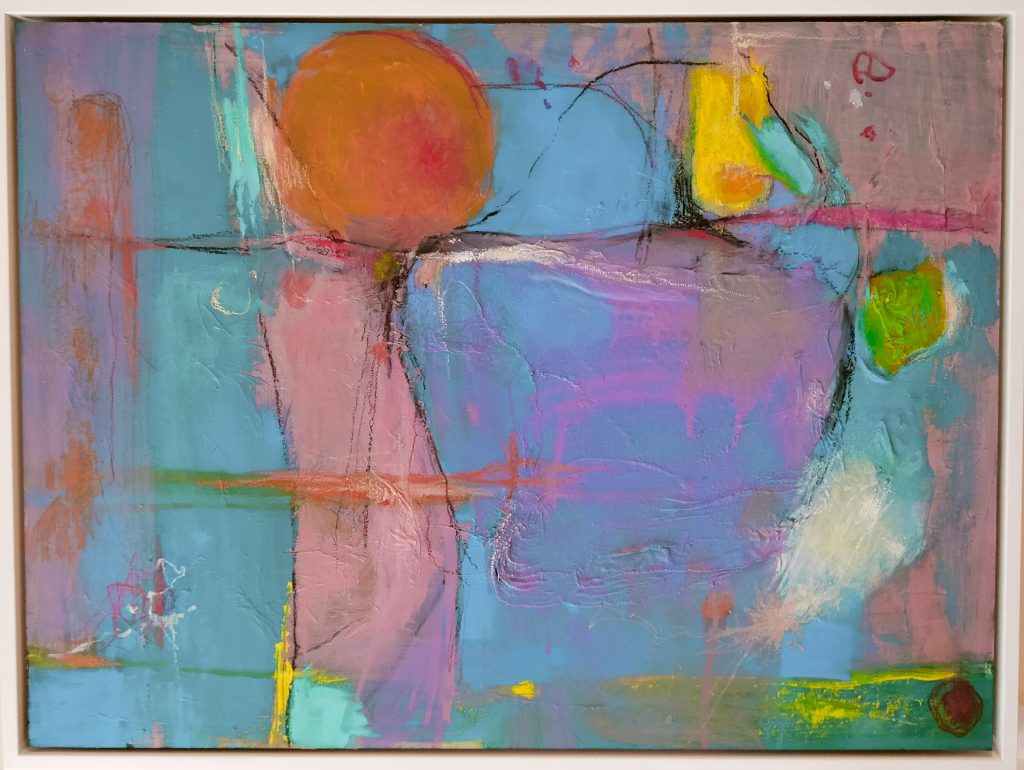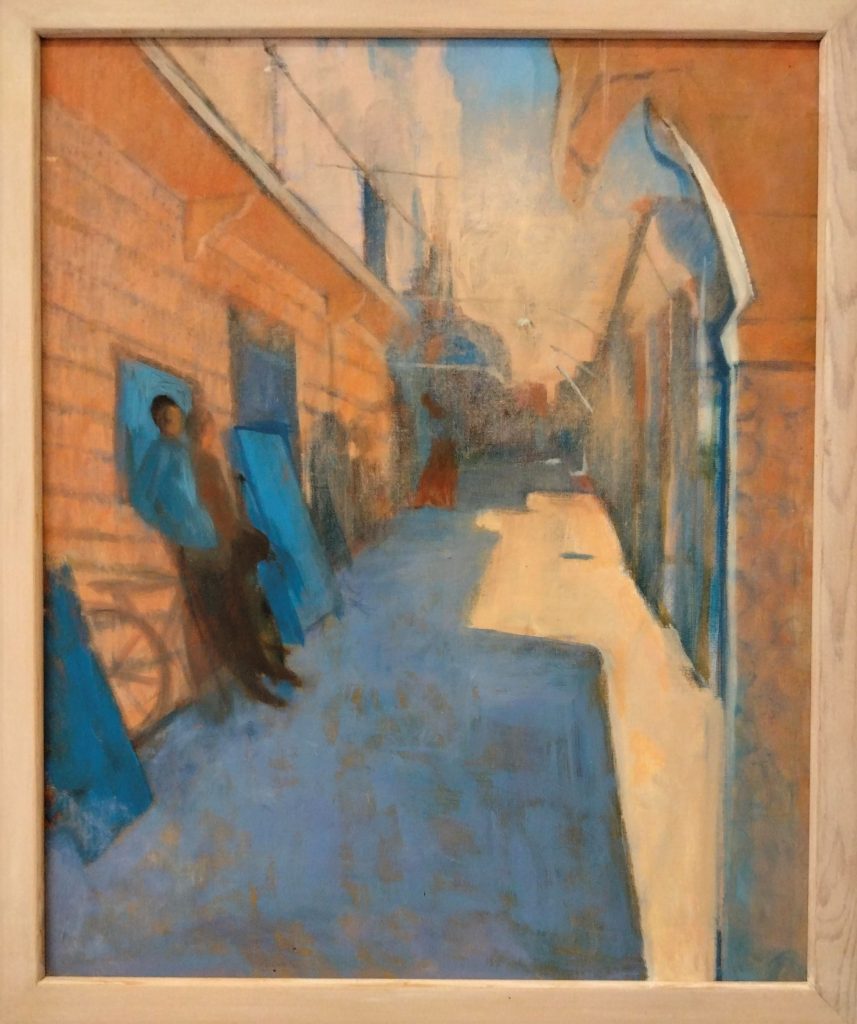At the end of Somerset Arts Week, October 2022, I drove out to meet Beryl at the home of her daughter Anna on the edge of Frome where they had mounted their five man exhibition. This consisted of Beryl’s paintings, both figurative and ab- stract, Anna’s textiles/clothes and three others whose work I didn’t see. The work went well together and had attracted many appreciative viewers.
I had not met Beryl before and the works I had seen in our BAS exhibition were all abstract but I heard this had not al- ways been the case and I was intrigued to see how and why she had made this move. In arranging to meet she had told me this exhibition would be a good place to explore this and to see works she had painted over many years.
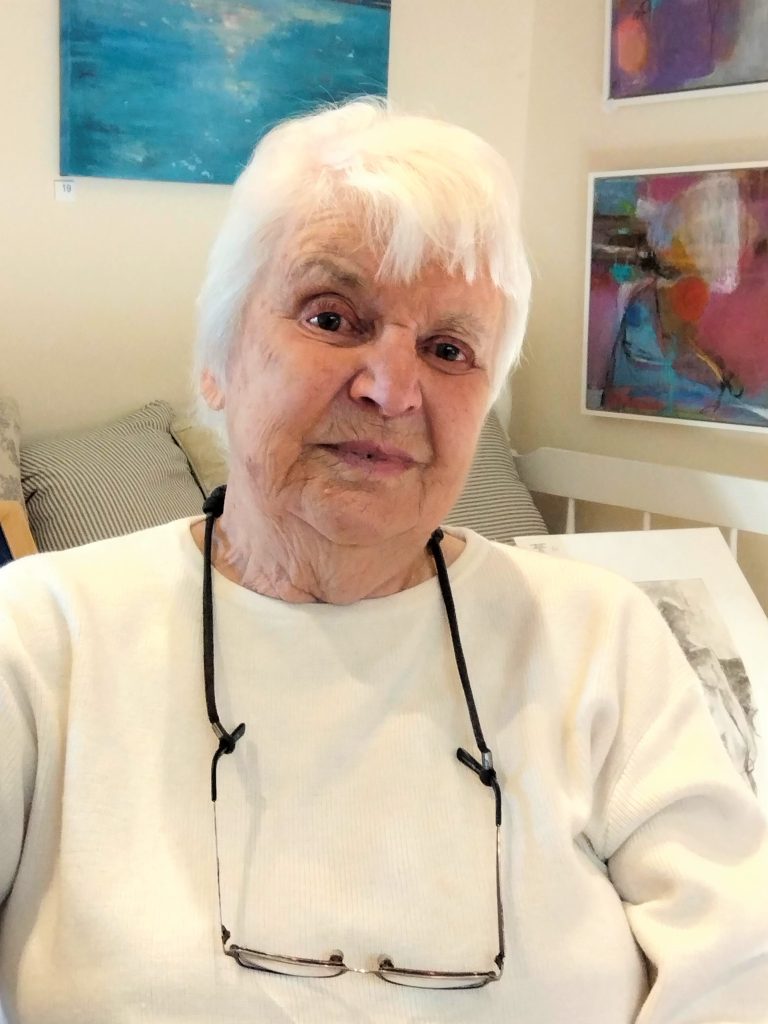
Meeting Beryl and seeing her work was fascinating and we quickly found much to discuss and reflect on. Born in Aldershot in 1929 her interest in Art grew while at school and through attending evening classes at nearby Farnham. She then became a student at Guildford Art School just after the Second World War. For the first year the emphasis was on life-drawing and classical plaster casts. “We just took it for granted. That was what one did then,” she said.
On completing the Guildford course, she went to France to work as an au pair in Paris and Normandy for two months. On returning she worked in local government in Aldershot and there she met Edward Fraenkel, a young mathematician of outstanding academic ability. Beryl describes their relationship as lively and argumentative from the first to the last, but it worked out well. They were married for 63 years until he died in 2019. She described vividly that his dedication to maths was total which meant her giving up outside work to bring up two daughters and run their home. She said he had no other interests except mathematics, but he did enjoy her artist friends. At different times they lived in Cambridge, London, the USA, Scotland, Sussex and Bath where he became professor. A particularly happy time for Beryl was when they were in London when he was at the LSE and she was able to make friends with a wide circle of professional artists, ”Many were teaching in different art schools and some have become quite famous,” she said.
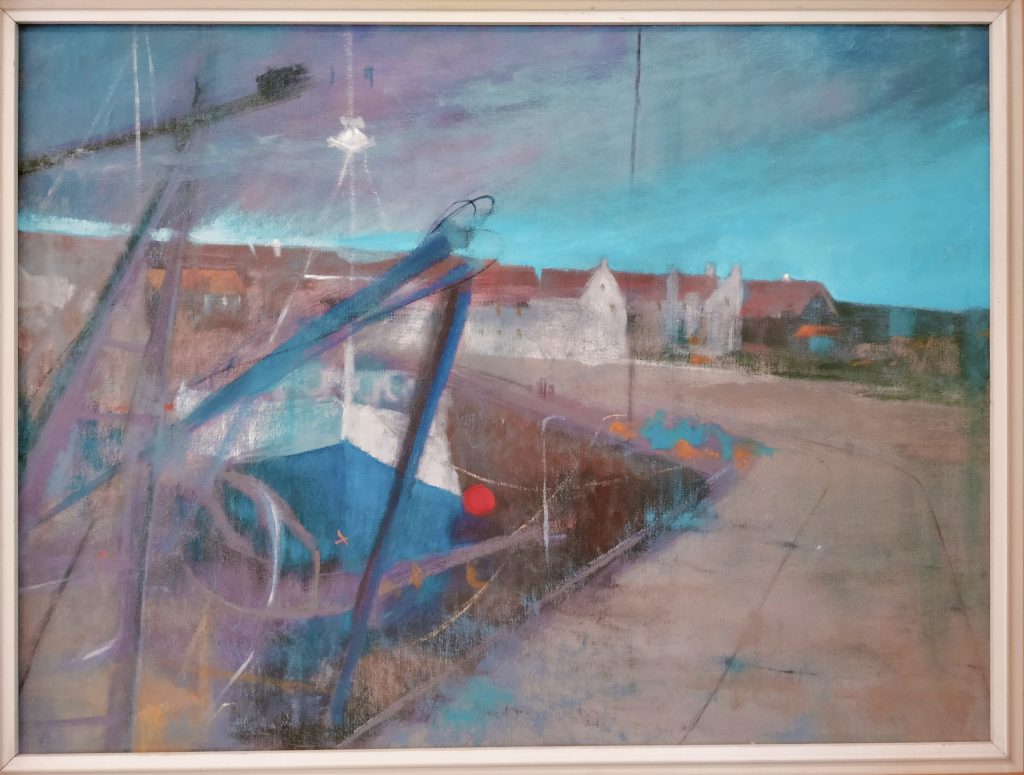
Beryl has had a long, varied and suc- cessful artistic career. She started painting portraits, pets and houses on commission, all these being subjects “Which I did not enjoy.” She has also had works hung in the Royal Academy, the Royal West of England Academy, and many other galleries. Seeing her work in Anna’s home was revealing for she had chosen to display about twenty of her figurative landscapes, one figure study and six more recent abstract works.
In discussing her work she said what had always fascinated her was not the drawing, the use of line, composition, subject matter, or the texture of paint on the canvas, but simply the juxtaposition of areas of colour. This I could see carried over from her figurative to her abstract works, though actually her control of all these elements I find exceptional. There was also one painting which she had done in the USA which when repainted many times inspired her to move from the figurative to the abstract.
Hearing her point this out made me look again at the originals. Of the figurative works I was impressed first by the way each painting captured the distinctive mood of the place – be it India, America, a dockside or a Moroccan street scene. Second, in each case the composition was carefully balanced yet memorably original. Thirdly in each the areas of colour were extremely subtle and often multi-layered, moving away from simple primary colours. Fourthly she carefully works within middle tones with no harsh darks or shiny whites. Fifthly she has only a few hard-edged lines and generally has soft, misty edges between one colour and the next. This is all very subtly done and the colours in particular it seemed to me have a glow in the originals which is slightly lost in photographic reproduction.
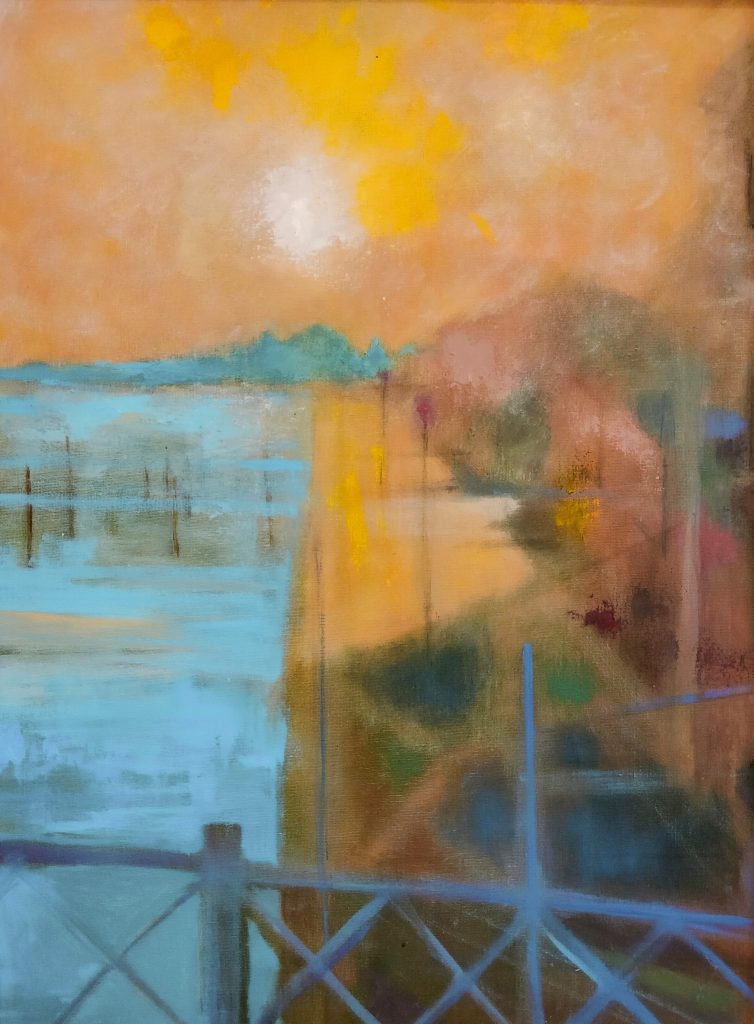
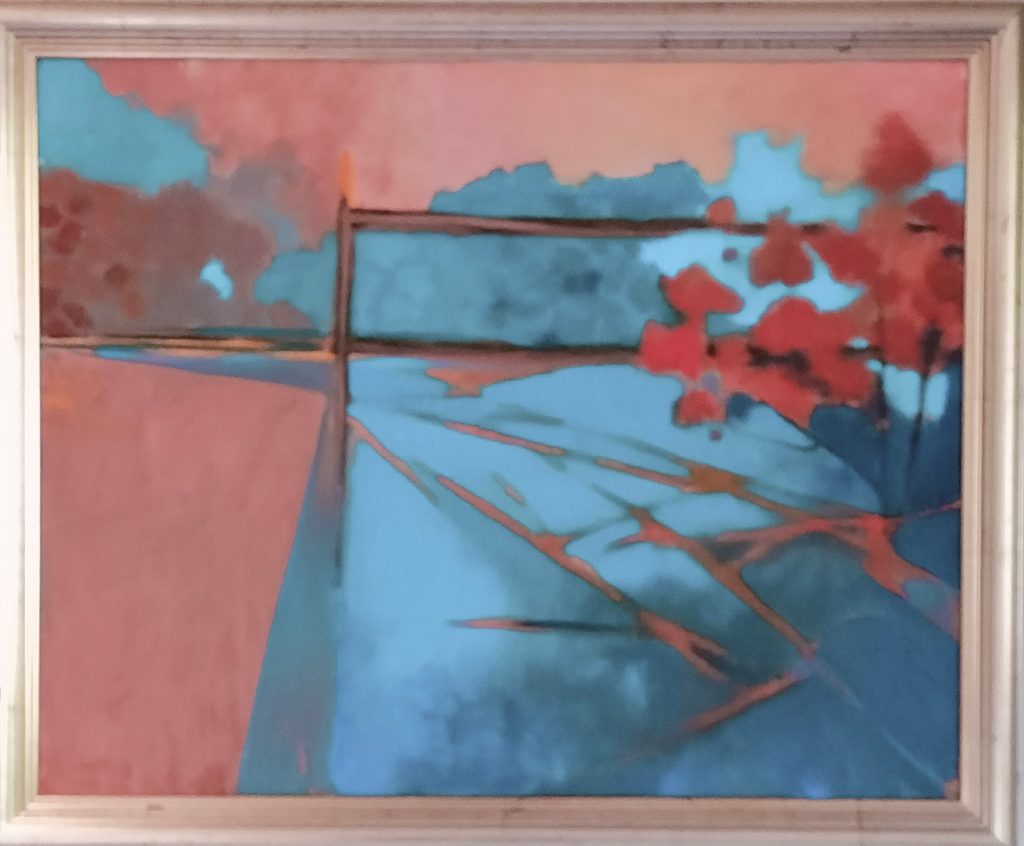
Turning to look at Beryl’s abstract paintings, the areas of colour, the middle tones and the misty edges apply and come glowingly alive when the works are seen as primarily explorations of subtle colours and tones more than as an exploration of shapes which is often the case with abstracts. This makes them rewarding to look at carefully.
John Baxter
